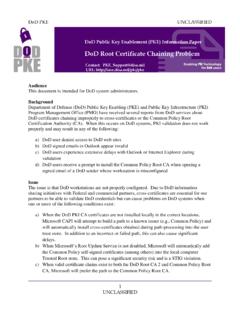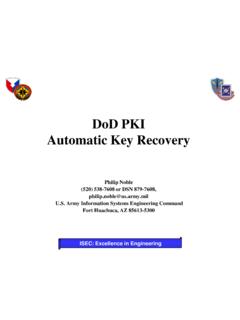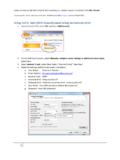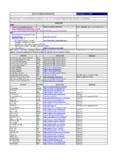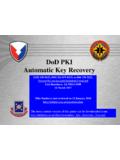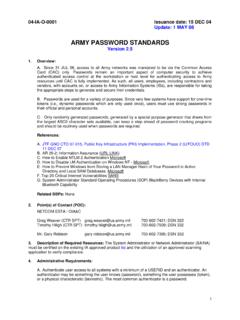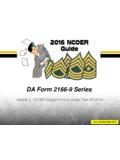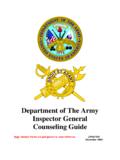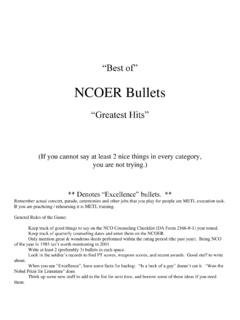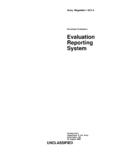Transcription of U.S. ARMY HUMAN RESOURCES COMMAND
1 THISWE' ARMY HUMAN RESOURCES COMMANDE valuation and Selection Systems1 Purpose of Evaluations: Identify our Army s best performers and those with the greatest potential Selection and Separation Boards and assignment managers are the audience Requires candor and courage; frank and accurate assessment Leaders must guard against word inflation ..words matter most Allows for field impact on selection of future leaders Both OER and NCOER are assessment tools ..do not counsel on assessments OER is a forced distribution system Senior Rater top box restricted to <50% Rater left most box restricted to <50% OER Rater narrative focus on performance OER SR narrative focus on quantifiable potential NCOER SR bullets focus on excellence.
2 Performance & quantifiable potential Selection & Promotion system is based on Army requirements Use the top box and quantified narratives to identify your best Cannot predict selection board results on Top Box/Most Qualified or Highly Qualified labels as selection boards decide based on a series of reports (the Whole File Concept) Commander is overall care-taker of all personnel systemsSystem FactsCounseling is key to development Who receives evaluation reports? Officers - Warrant Officer One through Brigadier General NCOs - Sergeant through COMMAND Sergeant Major.
3 Two different Evaluation form series for two different populations. Officer Evaluation Reporting System: Broader comparison, more of a generalist Doctrine Based, Tactical, Broadening Strategic Noncommissioned Officer Evaluation Reporting System: Highlights Strengths and Uniqueness of the NCO Corps. Assess technical competence in MOS and Doctrine Responsible for individual training (Teach others the trade)Army Evaluation Reporting SystemEvaluations Drivers: CHANGE OF DUTY CHANGE OF RATER ANNUAL PERIOD (12 rated months) COMPLETE THE RECORD (prior to selection boards) RELIEF FOR CAUSEEach report stands alone, assessments are made by supervisors in a rating relationship3 The eval is as important to the Army for the behavior it causes as for that which it measures.
4 Evaluation System Principles Secondary effects of Eval System: Maintain discipline Promote leader development/professionalism by linking performance to missions and doctrine (assessed by field leaders) Provide feedback to rated individualsRating Roles: RATER Performance & Counseling Met Standards? Yes / No Narrow, more specific SENIOR RATER Potential & Mentorship Capstone evaluation, spread of quality Broader, more general REVIEWER adherence to policy & intent On OER: When required On NCOER: Separate individualThe System s Components:(as approved by CSA/SECARMY) Rating relationship that exists betweenRater and Rated Soldier (w/oversight bySenior Rater) Counseling documented on support andcounseling forms.
5 Final assessment documented on evaluation Point:Separating Rater and Senior Rater & keeping supervisors at lowest levels have been keys to successfor over 32 years (since introduction of DA Form 67-8 and 2166-9)Moving Early OERs What & Why2LT / WO1 1LT CPT / CW3 POLICY WO1 reports moved to restricted section of AMHRR after selection to CW3. LT reports moved to restricted section of AMHRR at promotion to CPT. Officer Records Brief lists duty positionsAll OERs are reviewed for CPT and CW3 be accessed for selections in special circumstances5 Strengthening the Rating Chain Develop regulatory guidance to strengthen rating chain accountability Revised policy strengthens accountability within the rating chain to maintain relationships that provide rated officers with leaders who have first-hand knowledge of their responsibilities, performance and potential.
6 Requires approval of rating schemes / one level up (up to 3-Star HQ) Intermediate Raters limited to special branches and dual supervisor situations Supplementary Review: When there are no uniformed Army designated rating officials for the Rated Officer, an Army Officer within the organization will be designated as a Uniformed Army Advisor and perform a supplementary review. The Uniformed Army Advisor will be an Army officer, normally senior to the senior rater, within the organization. The Uniformed Army Advisor will monitor evaluation practices, provide assistance and advice to rating officials (as required) on matters pertaining to Army evaluations.
7 Applies in Joint Environments Applies where DoD and DA Civilians serve as Rater and Senior Rater Applies in multi-national environmentsUnclassifiedNew OER (DA Form 67-10 / Supplementary Review) In instances when there are no uniformed Army designated rating officials for the Rated Officer, an Army Officer within the organization will be designated as a Uniformed Army Advisor (UAA) and perform a supplementary review (IAW 623-3). The UAA will be an Army officer SENIORto the rated officer within the organization. The UAA will monitor evaluation practices, provide assistance and advice to rating officials (as required) on matters pertaining to Army :Rated OfficerRaterSenior RaterUniformed Army AdvisorCPTSESSESYes; MAJ or higherVDAS Executive Officer (CPT), rated and senior-rated by a single SES.
8 MAJGS-15 SESYes; LTC or higherECC Dwarf (MAJ) is rated by GS-15 and senior-rated by SES. LTCSES SESYes; COL or higherASA (XXX) (LTC) is rated and senior-rated by a single ADMAir Force GOYes; Senior COL or higher JS J-33 GFM Chief (COL) is rated and senior-rated by non uniformed Army officers. Senior Rater is the owner of the Evaluation and is responsible for timely completion Mentor/Develop your subordinates Support Form tool available to aid in defining/guiding goals and objective throughout rating period, provides feedback to rated individual -not a lot of space but should be catalyst of conversation Understand how our Evaluation Systems works Fairly and accurately assess subordinates -participate in counseling Senior Rater Narrative is key: Exclusive vs.
9 Strong Narrative to describe subordinate Quantify your best Be What you don t say is just as damaging as what you do say Verify/Certify your subordinates on how to assess ask them to bring their counselings and assessment s with them to their counseling Understand how to manage your Senior Rater profile - develop your rating philosophy Anticipate and project next Evaluation Current thru date on file plus 12 months or known changes of rater Complete the record dates for those being considered by a board Monitor when reports are required, that they re submitted on time, and unit rating schemes are current and accurate (Leader responsibility) Use Interactive Web Response System (IWRS) and Evaluation Entry System (EES)
10 Use EES and AKO MyForms to submit be aware of sequencing during transitionRole of the Senior Rater & keys to successMembership in the S1 NET community helps Raters must read, understand, and assess performance based on ADRP 6-22 Leadership Attributes and Competencies Ensure rating schemes are published and understood Provide Support Form and Counsel those you rate (mandatory) Develop a Rating Philosophy and communicate it to rated officers Advocate Officer to the Senior Rater Recommend future Operational and Broadening Assignments on field grade form Clearly and concisely communicate rated officer s most significant achievements Focus on narrative comments; selection board members use the rater s assessment in their file deliberations _____ Anticipate and project future evaluations When & Why?
